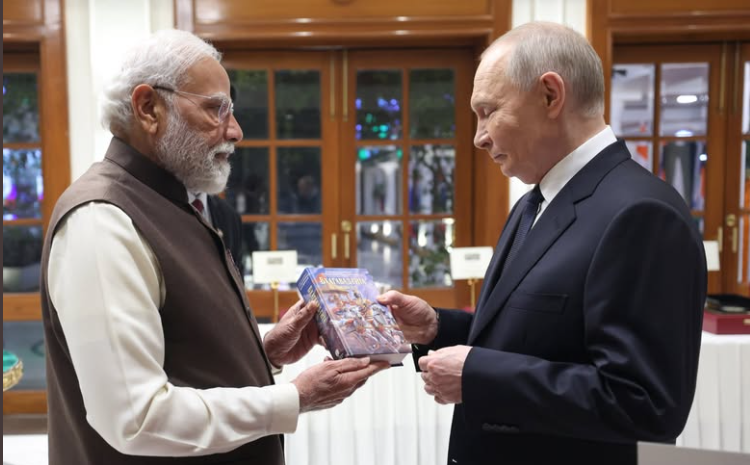India-US Trade Policy Forum to boost bilateral trade and investment
- InduQin
- Jan 13, 2023
- 3 min read

India-US: Allies with strong economic ties
India and the US are natural allies with shared values in terms of their political ideology based on democratic principles, India being the world’s largest and the US being its oldest functional democracy. The two also have fair, equitable and independent judiciary systems that rely upon principles of non-discrimination on the grounds of region and religion.
This makes India and the US mutually dependable strategic partners at various international forums despite several differences primarily due to their divergent national interests.
Since 2013-14, the US has consistently been India’s top export destination. In 2021-22, the US, with $76 billion, accounted for over 18 per cent of India’s total exports – much ahead of the United Arab Emirates (UAE), $28 billion (6.6 per cent), and China, $21 billion (3.8 per cent). During April-November 2022, India’s exports to the US grew at 8.3 per cent to $53 billion from $50 billion in April-November 2021, whereas its exports to China declined by 36.8 per cent during the same period.
The US is also the biggest FDI investor in India in terms of equity, as per the Reserve Bank of India’s (RBI’s) latest FDI data, with Rs 8.1 crore, accounting for 16.9 per cent share in 2022.
The US accounted for the highest inward remittances with a share of 23.4 per cent to India, as per the RBI, leaving behind the UAE with a share of 18 per cent in 2021. As India remains the world’s top recipient of foreign inward remittances, which are expected to touch $100 billion in 2022, the transformational shift to the US from the Gulf countries reveals the rise of India’s high-skilled manpower.
India upbeat on trade policy reforms
India’s growing economic resilience in recent years and its stellar economic performance as the world’s fastest growing large economy at 6.9 per cent amidst global economic woes has transformed it into a strategically significant country in the comity of nations. The post-Covid disruptions of international supply chains and the recent economic slowdown in China emanating from its zero-Covid policy and bilateral US-China tensions over Taiwan necessitated the US to explore alternative markets for its goods, countries for sourcing its import requirements and investment destinations for its companies to expand internationally.
Given the size of its domestic market and demographic dividend, India is poised to emerge as the dominant economic superpower in the coming years. While negotiating with US Trade Representative Katherine Tai at the forthcoming India-US Trade Policy Forum (TPF), Indian Commerce Minister Piyush Goyal seems upbeat about the country’s growing economic resilience and transformational policy measures and institutional mechanism to boost exports with an unprecedented 45 per cent growth over the previous year, taking India’s exports to a record level of $422 billion in 2021-22. The India-US TPF, the leading bilateral institutional mechanism to discuss and resolve issues related to trade and investment, is scheduled for January 11 in Washington.
Key issues for bilateral negotiations
The US negotiators are extremely concerned about their burgeoning imports and trade deficit, which went up from $798 billion in 2016 to $1.2 trillion in 2021.
Indeed, the total US exports grew from $1.547 trillion in 2017 at 1 per cent to $1.753 trillion in 2021, whereas its imports rapidly rose at 3 per cent from $2.406 trillion to $2.937 trillion during the same period.
Therefore, American negotiators, in their relentless crusade to penetrate world markets, are not only persuading countries, especially emerging economies, to open up but also to reduce import duties, if not provide duty-free access to US goods.
The US trade deficit with India grew significantly from $24.9 billion in 2017 to $36.9 billion in 2022, sending American negotiators looking for ways to penetrate the Indian market. India consistently has a positive trade balance with the US – during April-November 2022, it was $19 billion.
The US had trade deficit with India in 2021 for medicaments ($8.5 billion), polished diamonds ($5.7 billion), jewellery ($3.2 billion), petroleum products ($3 billion), bedsheets and linens ($2.7 billion), crustaceans and other marine products ($2.7 billion), motor vehicles ($1.4 billion), precious and semi-precious stones ($988 million) etc, whereas it has trade surplus in supplying crude petroleum ($9.5 billion), petroleum gas ($1.8 billion), coal ($1.3 billion), gold jewellery ($1.3 billion), nuts ($908 million), acrylic hydrocarbon ($822 million) etc.
India is the world’s largest importer of almonds with a 59 per cent share, and the US is its largest supplier, accounting for 87 per cent share at $749 million in 2021. Besides this, there are non-agricultural items such as saturated acyclic hydrocarbons worth $591 million (84 per cent share) and denatured ethyl alcohol worth $276 million (88 per cent share).
The declining industrial activity in the US – as revealed by the deteriorating Manufacturing Purchase Managers’ Index (PMI), from 57.5 in May 2022 to 46.2 in December 2022 – vis-a-vis India’s robust PMI growth from 54.6 to 57.8 during the same period is a matter of growing concern among American policymakers and negotiators.
Read More at https://www.business-standard.com/article/opinion/india-us-trade-policy-forum-to-boost-bilateral-trade-and-investment-123011101100_1.html







Comments